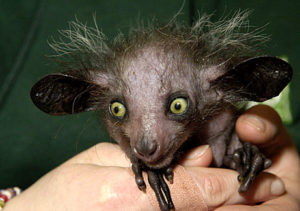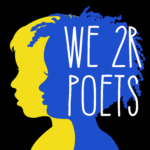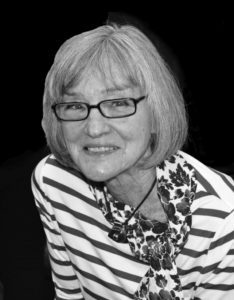
The question most often asked of authors is “Where do you get your ideas?” Truth is you get them from everywhere—from life—yours and others’—from reading, from your cat, your dog. You get the idea! Usually when people ask me where the idea for particular book came from there’s no one thing I can point to and say, “This is where the idea came from. This is where it started.” But with Catch Me When I Fall, I can tell you exactly.
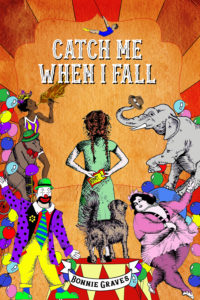
The spark of an idea for Catch Me When I Fall came after reading an uncle’s memoir about his experiences as a young boy watering the elephants for a traveling circus in hopes of earning a ticket to the Big Show. The anecdote was so rich in detail and humor it just begged to become a story. I didn’t feel I could write it from a boy’s point of view, the way my uncle had, so I needed a heroine, someone brave enough to dress as a boy to get a circus job, someone who desperately needed that circus job. That someone turned out to be 12-year-old Emma Monroe, a spunky red-head, who’s determined to learn the identity of her father, the man her mother refuses to talk about.
The acclaimed author Virginia Hamilton once wrote, “Writing is what you know, remember, and imagine.” Well put, I think. Much about Emma and her mother I drew from my own childhood. When I was nine, my father drove our family—my mom and two siblings—out to California to his brother’s family where he left us—and returned to Wisconsin—to be with his lover. He was never spoken of again, by anyone. It was as if he’d never existed. My sibs and I all knew that speaking his name was taboo, forbidden and even, to a kid, dangerous. So, I suppose, in a way, writing the story was an exploration of this childhood trauma, one that had remained forever in the shadows. Emma’s story, in a way, would help bring it into the light.
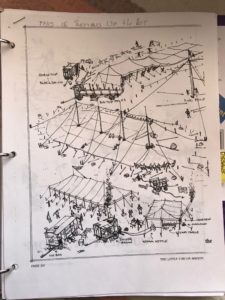
“Writing is what you know, remember, and imagine.” I knew and remembered what it felt like to be fatherless and could “imagine” how a gutsy (even though I was anything but gutsy) twelve-years-old girl might go about searching for her father. However, since the story is set during the Great Depression and most of the action takes place in a traveling circus, I couldn’t rely on just my own experience and knowledge of the world, or even my own imagination but had to do reams of research—on life in the 1930s and the ins and outs of the traveling circus. I had to discover things I didn’t know but needed to, in order to make the story come to life, to be as accurate a portrayal of the times and of the circus as I could. Of course, that meant hours and hours in the library and researching the internet for articles and images of the 1930s and the circus during that period.
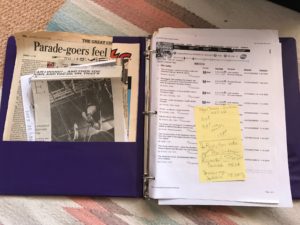
I had a special notebook where I kept my research over the many years. The divider tabs read: Photos, Flying Trapeze, Descriptions, Essay, and 1930s. The photo here shows the first page of the notebook—a library search I did for circus books and a page from the Descriptions section of the setting up of the circus.

Since the story is set in Racine, Wisconsin, the Wisconsin History Society was a great help as were the circus folks I met over the internet, especially aerialists like Laura Rappa and Lindsay Van Voorhis and circus historian and model maker Ned Kronberg.
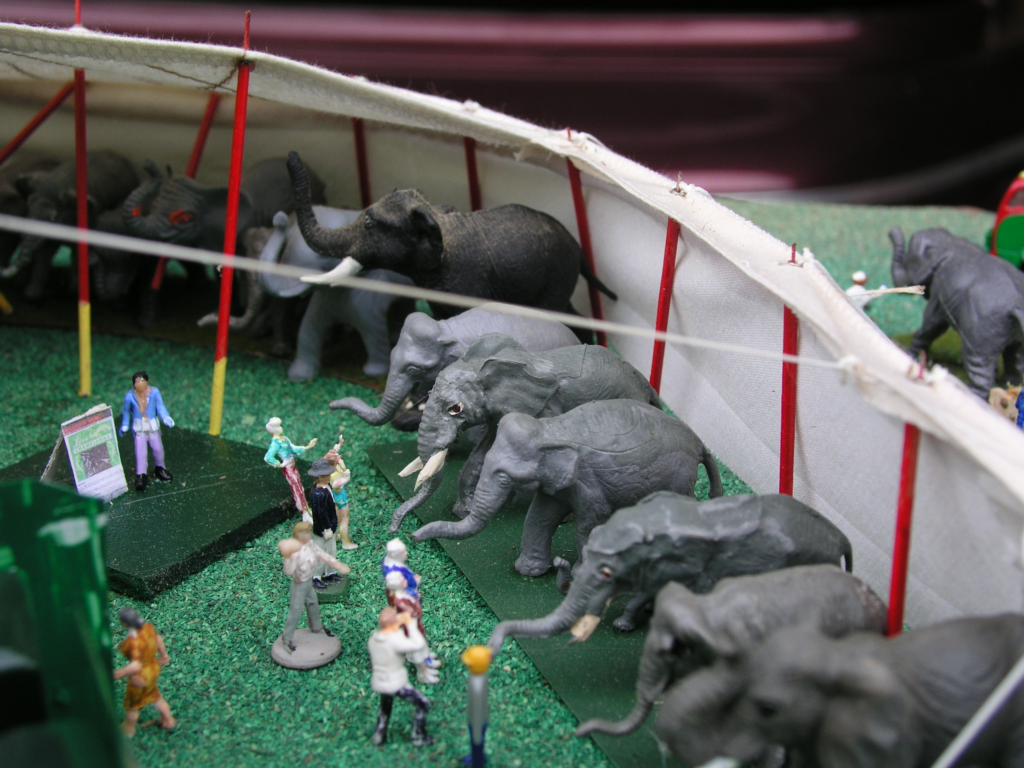
“Known, remembered, imagined.” Once I’d immersed myself in the 1930s and circus life through extensive research, I could begin imagining what it was like to be a young girl living during that time, to experience the thrill of the circus, the sights—the breathtaking aerialists, the parade, the midway; the sounds—calliope, trumpeting elephants, roaring tigers; the smells—animals, hay, sawdust—all through the wonderful world of imagination which had been fueled by the research I had done.

But researching and writing a book and placing it with a publisher is, for most writers, not the end of the book’s journey, but a beginning—like a birth. As my young hero Emma in Catch Me When I Fall is launched out into the world, my hope is that she will find her way into the hands and hearts of readers, that her story will resonate in some way, perhaps bring comfort, laughter, a bit of wonder or hope or courage “if Emma can do this, maybe I can too.”
Yes, indeed, writing is, as Virginia Hamilton suggests, “what you know, remember, and imagine.” It is also something not done totally alone, at least not for me. Just as it “takes a village to raise a child,” so does writing and publishing a book—which at times does feel like one’s child! Catch Me When I Fall had one of those villages behind it—a village of people who helped with research, writer friends who read and critiqued the manuscript and gave valuable feedback, friends and family who gave support over the long journey to publication, and finally editor-publisher Jaynie Royal at Fitzroy Books who took a chance on my valiant young protagonist Emma and introduced her to the world with the publication of Catch Me When I Fall. Thank you all—my village!
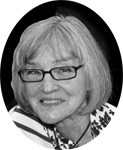
Author of dozens of children’s books, both fiction and non-fiction, and professional books on teaching reading, Bonnie Graves spent her growing-up years in Wisconsin and Southern California. Here she romped through childhood with her boy cousins and their pals and in her preteen years wrote and produced plays for family and neighbors. A former elementary school teacher, Bonnie’s work has been honored with Work-in-Progress grants from the Society of Children’s Book Writers and Illustrators and the Minnesota Arts Board, first place in literary contests sponsored by the Loft Literary Center and also the Pacific Northwest Writers Association, and her chapter book, Taking Care of Trouble, received a South Carolina Children’s Choice Award. She currently lives in Bloomington, Minnesota.
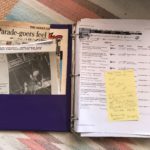

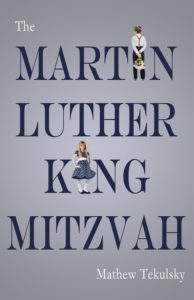


 Italian guys…gorgeous views of Positano and the Amalfi Coast…wine and limoncello—think lemonade with an alcoholic punch— (Note: gasp! there is no drinking age in Italy)…dark intrigue and mystery—and not just mystery about how to meet that Italian hottie! So, what’s not to like about writing a book with all these elements? You can just imagine what fun this book was to write!
Italian guys…gorgeous views of Positano and the Amalfi Coast…wine and limoncello—think lemonade with an alcoholic punch— (Note: gasp! there is no drinking age in Italy)…dark intrigue and mystery—and not just mystery about how to meet that Italian hottie! So, what’s not to like about writing a book with all these elements? You can just imagine what fun this book was to write! I definitely remember where I was when the first idea for Secrets popped into my head. Guess where? Surrounded by people speaking Italian, of course! I hadn’t been back to Italy since I grew up there as a kid, so, even though I still studied and spoke Italian, I hadn’t been surrounded by people actually speaking Italian for years.
I definitely remember where I was when the first idea for Secrets popped into my head. Guess where? Surrounded by people speaking Italian, of course! I hadn’t been back to Italy since I grew up there as a kid, so, even though I still studied and spoke Italian, I hadn’t been surrounded by people actually speaking Italian for years. Of course, novels are about so much, much more than an action plot, so my main character, Alessandra, needed her own journey to take. Because I grew up in Italy as a young child and have often felt that my heart is still a little bit Italian, having Alessandra conflicted about who she really was seemed to be a natural problem for her to try and solve. That is Alessandra’s journey in Secrets in Translation, much as she resists it. Of course, because Italian young men can be drop-dead handsome, Alessandra had to find an Italian boyfriend, too… (That would be crush-worthy Carlo, of course) In the book, she wonders if there are ANY ugly guys in Italy (probably not). There’s another young man in the book, too, and you’ll have to read it to find out more about Giovanni…and his own secrets…
Of course, novels are about so much, much more than an action plot, so my main character, Alessandra, needed her own journey to take. Because I grew up in Italy as a young child and have often felt that my heart is still a little bit Italian, having Alessandra conflicted about who she really was seemed to be a natural problem for her to try and solve. That is Alessandra’s journey in Secrets in Translation, much as she resists it. Of course, because Italian young men can be drop-dead handsome, Alessandra had to find an Italian boyfriend, too… (That would be crush-worthy Carlo, of course) In the book, she wonders if there are ANY ugly guys in Italy (probably not). There’s another young man in the book, too, and you’ll have to read it to find out more about Giovanni…and his own secrets… Once Alessandra’s story was down on paper, you might think it was almost publication-ready—but that’s not true! Secrets in Translation went through probably over fifty revisions, including the last one, after it was acquired by Fitzroy Books and edited by my wonderful editor, Jaynie Royal, who always believed in Alessandra and her story. How many years did this entire process take, from the very first idea to the published book? Try fourteen years!
Once Alessandra’s story was down on paper, you might think it was almost publication-ready—but that’s not true! Secrets in Translation went through probably over fifty revisions, including the last one, after it was acquired by Fitzroy Books and edited by my wonderful editor, Jaynie Royal, who always believed in Alessandra and her story. How many years did this entire process take, from the very first idea to the published book? Try fourteen years!

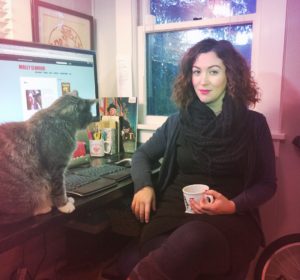 When I was a college freshman, I wrote a short story of two small-town brothers—one the bully and the other his prey. The older one was always finding the younger’s weaknesses and exploiting them, while their machismo father egged the older brother on. It was a simple story with a comic punch line.
When I was a college freshman, I wrote a short story of two small-town brothers—one the bully and the other his prey. The older one was always finding the younger’s weaknesses and exploiting them, while their machismo father egged the older brother on. It was a simple story with a comic punch line.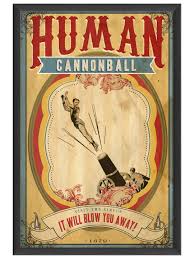 In order to talk about the circus, I have to first talk about the mom, Athena. I’ll admit it: the human cannonball mother (and entire circus theme) came from the Natalie Merchant’s song, Ophelia, specifically these lines:
In order to talk about the circus, I have to first talk about the mom, Athena. I’ll admit it: the human cannonball mother (and entire circus theme) came from the Natalie Merchant’s song, Ophelia, specifically these lines: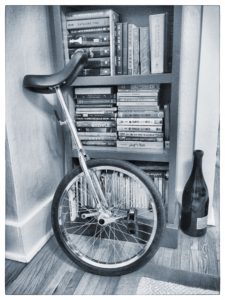 My favorite part about writing this book was researching circuses and sideshows. I loved teasing out that info across hundreds of pages, leading up to the reveal of Bartholomew’s Circus of the Incredible. I explored books and blogs, watched a lot of circus movies, and granted myself permission to see Cirque de Soliel every time they came to town.
My favorite part about writing this book was researching circuses and sideshows. I loved teasing out that info across hundreds of pages, leading up to the reveal of Bartholomew’s Circus of the Incredible. I explored books and blogs, watched a lot of circus movies, and granted myself permission to see Cirque de Soliel every time they came to town.